Meldingen din er sendt.
Vi behandler forespørselen din og kontakter deg så snart som mulig.
Skjemaet har blitt sendt inn.
Mer informasjon finner du i postkassen din.
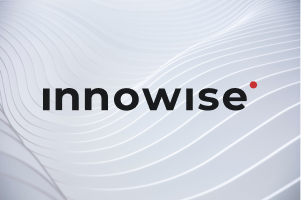
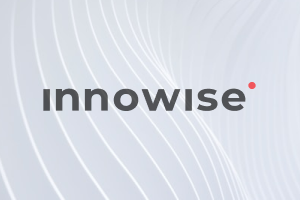

Jeg har tilbrakt nok tid i bransjen til å se en ubestridelig sannhet: Medier og underholdning endrer seg raskere enn de fleste selskaper klarer å holde tritt med. Tiden med manuell innholdsproduksjon, markedsføring basert på magefølelse og distribusjon som passer alle? De er over. Kunstig intelligens er nå ryggraden i hvordan innhold skapes, redigeres, distribueres og tjenes penger på.
Jeg ser for meg at virksomheter enten omfavner AI og skalerer som aldri før ... eller motsetter seg det og sakker akterut. Netflix finjusterer anbefalingene ved hjelp av maskinlæring, Disney automatiserer animasjon med AI-drevne verktøy, og plattformer som Spotify foreslår ikke bare musikk - de forutser hva du vil ønske deg før du selv er klar over det.
Men la oss dempe overdrivelsen. AI er ikke en magisk løsning som automatisk får innhold til å gå viralt eller produksjoner til å gå smidigere. Men det finnes svært reelle, praktiske bruksområder som allerede gir målbare resultater. I dag skal jeg gå gjennom bruksområdene for kunstig intelligens i medie- og underholdningsbransjen - hva som fungerer, hva som ikke gjør det, og hva bedrifter må tenke på før de kaster seg ut i det.
Hvis du trenger en spoiler: AI vil ikke erstatte kreativitet, men det vil omdefinere hvordan vi skaper, distribuerer og tjener penger på innhold. Spørsmålet er om du er klar til å tilpasse deg?
Vi hører det hele tiden: "Kunstig intelligens er i ferd med å forandre mediene." Men hva betyr det egentlig? Automatisert videoredigering? Personaliserte anbefalinger? AI-drevne skript? Jeg skal prøve å gå bak overskriftene og se nærmere på reelle eksempler på kunstig intelligens i underholdningsbransjen, og hvor jeg mener at kunstig intelligens virkelig flytter nålen.
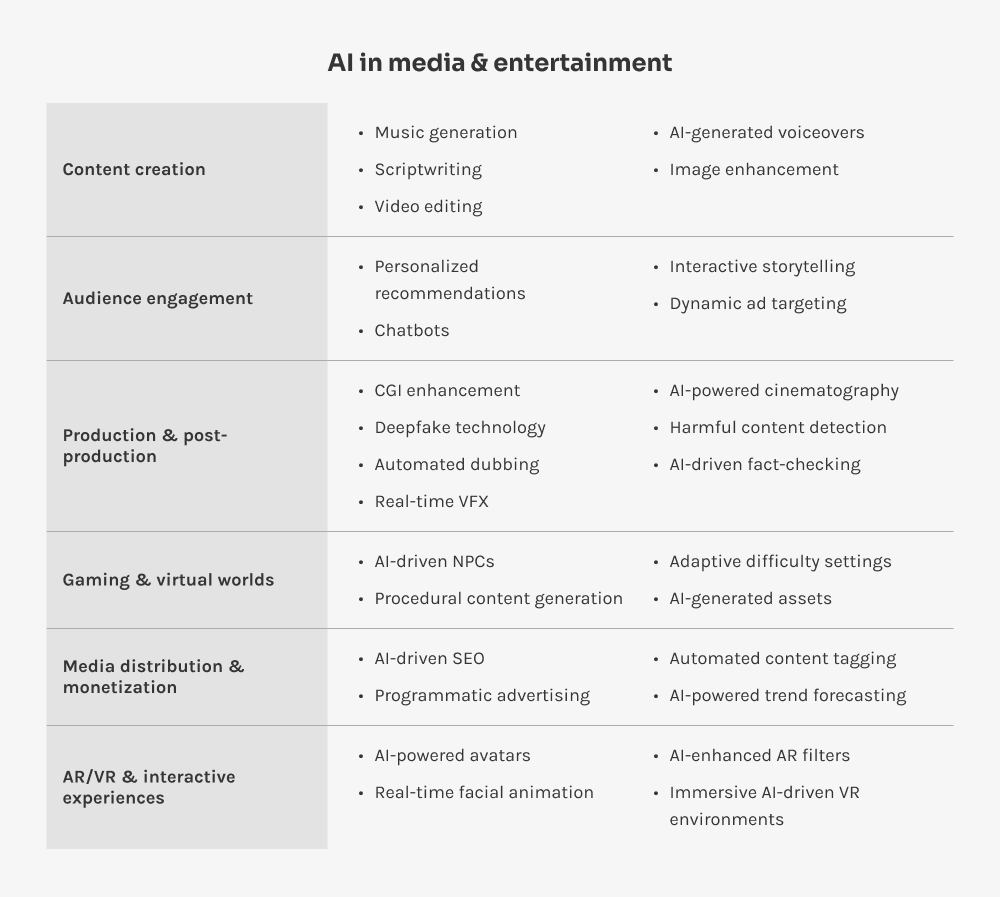
AI står allerede i sentrum for hvordan innhold genereres, omformer arbeidsflyten og utfordrer tradisjonelle kreative prosesser. Men som med all ny teknologi, er det en god del debatt om hvilken rolle den spiller. Så på hvilke måter har kunstig intelligens innvirkning?
For det første er det tidsbesparende for skaperne. Fra et praktisk synspunkt hjelper kunstig intelligens skaperne med å fokusere på de viktige, verdiskapende aspektene ved arbeidet. I stedet for å bruke timevis på å utarbeide grunnleggende innhold, kan en markedsfører eller journalist bruke kunstig intelligens til å generere innledende utkast som de kan finpusse og tilpasse.
Jeg har sett selskaper i media, som Associated Press, implementere AI for å effektivisere nyhetsproduksjonen.
Selv om AI-en ikke erstatter journalisten, gjør den rutineprosessen dramatisk raskere, slik at mennesker kan fokusere på dypere historier eller mer nyansert skriving.
For det andre er AI en god medskaper. Jeg har blitt spesielt imponert over AIs potensial innen musikk og filmskaping, der verktøy som Amper Music og Aiva Technologies gjør det mulig for skapere å komponere musikk og generere lydspor. Disse verktøyene spytter ikke bare ut generiske, forhåndsprogrammerte melodier; de tilbyr tilpasning basert på stemning, tempo og stil. I dag kan skaperne eksperimentere på måter de kanskje ikke ville ha gjort ellers.
Jeg beundrer spesielt hvordan David Cope, en velkjent komponist som har samarbeidet med AI, sette den: "Programmene er bare en forlengelse av meg. Og hvorfor skulle jeg bruke seks måneder eller et år på å komme frem til en løsning som jeg kan finne på en formiddag? Jeg har brukt nesten 60 år av livet mitt på å komponere, halvparten av det på tradisjonelle måter og halvparten ved hjelp av teknologi. Å gå tilbake ville være som å forsøke å grave et hull med fingrene etter at spaden er laget."
Og jeg kunne ikke vært mer enig. AI har kanskje ikke den samme emosjonelle dybden som en menneskelig komponist, men den kan absolutt åpne nye dører i den kreative prosessen.
"AI er ikke her for å skrive det neste Oscar-vinnende manuset, men det kan hjelpe historiefortellere med å bryte kreative blokkeringer, forutsi publikumstrender og jobbe smartere. Vinnerne vil være de som ser på AI som en samarbeidspartner, ikke en konkurrent."
Redigering har alltid vært en av de mest tidkrevende delene av videoproduksjon. Alle som har brukt timevis på å finjustere klipp, justere farger eller fikse lyd, vet hvor kjedelig det kan være. Men kunstig intelligens er i ferd med å ta mye av det slitsomme arbeidet fra redaktørenes skuldre.
Ta Adobe Sensei, for eksempel. Adobe har vært et populært verktøy for videoprofesjonelle i årevis, og deres AI-drevne teknologi gjør redigeringen mye mer effektiv. Den automatiserer oppgaver som fargekorrigering, scenedeteksjon og lydopprydding - ting som pleide å ta mye tid.
Og så har vi Deepdub, som endrer dubbing i stor stil. Tradisjonell dubbing krever en latterlig stor innsats: å finne de rette stemmeskuespillerne, synkronisere talen perfekt og sørge for at fremføringen er naturlig. Deepdub's AI analyserer en skuespillers stemme og gjenskaper den på flere språk, og beholder tonefall, følelser og til og med subtile vokale særegenheter. Det betyr at internasjonale utgivelser ikke bare høres oversatt ut - de føles faktisk autentiske. Hvis du noen gang har grått av en pinlig dubbet film, skjønner du hvorfor dette er så viktig.
AI håndterer også ting som bevegelsessporing, fjerning av objekter og til og med ansiktsgjenkjenning for å hjelpe til med å organisere enorme mengder filmmateriale. Det gjør postproduksjonen ikke bare raskere, men også smartere.
Har du noen gang lurt på hvorfor Netflix alltid ser ut til å vite hva du kommer til å elske, eller hvorfor Spotifys Discover Weekly føles uhyggelig treffsikkert? Det er kunstig intelligens som jobber bak kulissene, analyserer vanene dine, forutser preferansene dine og holder deg engasjert.
På dette punktet, personalisering er ryggraden i strømmeplattformene. Uten AI ville brukerne druknet i endeløse innholdsbiblioteker, usikre på hva de skulle se eller høre på neste gang. AI endrer dette ved å forstå den enkeltes smak og sørge for at det alltid finnes noe relevant som holder deg hektet.
Ta Netflix' anbefalingsmotor. Den ser ikke bare på hva du så sist. Den analyserer seerhistorikk, seermønstre og til og med metadata som scenesammensetning, tempo og sjangertrender. Det er slik den avgjør om den skal anbefale deg et langsomt drama eller en fartsfylt thriller.
Spotify gjør noe lignende med kuratering av musikk. Det sporer ikke bare hvilke sanger du spiller, det lærer av hvor lenge du lytter, hva du hopper over og hva du legger til i spillelister.
AI-modeller som OpenAIs Jukeboks til og med analysere musikalske strukturer for å forutsi hva slags lyd du vil like neste gang.
Fra mitt perspektiv er AI-drevne anbefalinger et tveegget sverd. På den ene siden forbedrer de brukeropplevelsen - ingen ønsker å gå gjennom tusenvis av alternativer uten mål og mening. Men på den andre siden kan de kan skape innholdsbobler hvor folk bare ser det som stemmer overens med deres tidligere valg, noe som begrenser oppdagelsesgleden. Noen plattformer prøver å motvirke dette ved å introdusere "utforskningsalgoritmer" som med vilje legger inn ulike valg.
Til syvende og sist er personalisering avgjørende for å skape engasjement og holde på folk. Jo bedre AI og medieplattformer blir til å forstå brukerne, desto mer tid vil de bruke på strømming - og det er akkurat det plattformene ønsker.
Markedsføring i media og underholdning har alltid handlet om nå ut til rett publikum til rett tid. Og kunstig intelligens har gjort det enklere. I stedet for å kaste ut annonser og håpe på det beste, har bedrifter nå datadrevet presisjon som gjør at hver eneste markedsføringskrone teller.
Ta Google Ads. Det handler ikke lenger bare om å sette opp søkeord og budsjetter. Det AI bak det analyserer kontinuerlig data om brukerengasjement, surfeatferd og tidligere interaksjoner for å finjustere hvilke annonser folk ser. Den justerer automatisk overskrifter, bilder og oppfordringer til handling basert på hva som gir best resultater.
Men AI i underholdningsbransjens markedsføring handler ikke bare om digitale annonser. Det handler også om å ta beslutninger i det store bildet, som å forutsi hvilke filmer som vil bli en suksess allerede før de kommer på kino. Cinelytic, for eksempel, bruker kunstig intelligens til å analysere castingvalg, budsjettallokeringer og markedsføringsstrategier for å estimere billettinntektene. Studioene bruker disse dataene til å forbedre markedsføringstiltakene sine og til og med justere lanseringsstrategiene.
Fra mitt ståsted er denne typen AI-drevet markedsføring både en stor mulighet og en utfordring. På den ene siden gjør det reklame langt mer effektiv, og hjelper studioer og plattformer med å allokere budsjetter der de vil ha størst effekt. Men på den andre siden kan det føre til formell beslutningstaking, der kreativiteten må vike til fordel for det AI forutser vil være "trygge spill".
Med den enorme mengden innhold som lastes opp hvert sekund, klarer ikke de menneskelige moderatorene å holde tritt. I tillegg sliter det på den mentale helsen deres å håndtere forstyrrende materiale. Nå er det kunstig intelligens som holder plattformene trygge, filtrerer bort skadelig innhold og takler deepfakes før de sprer seg.
Ta YouTubes AI-modereringssystem. Det skanner og fjerner skadelig, villedende eller upassende innhold før det får fotfeste. Systemet er opplært på enorme datasett for å gjenkjenne mønstre av hatefulle ytringer, brudd på opphavsretten og til og med subtile feilinformasjonstaktikker. Det ser ikke bare på selve videoen, men analyserer også bildetekster, kommentarer og engasjementsmålinger for å fange opp brudd. Og selv om kunstig intelligens gjør det meste av jobben, tar menneskelige anmeldere over når ting blir kompliserte, fordi kunstig intelligens ikke er perfekt.
Deepfake-teknologi er en annen stor utfordring. Den er blitt så avansert at det er vanskeligere enn noensinne å skille mellom ekte og falsk. Det er her AI-drevne deteksjonsverktøy som Deepware, Sessity AI og Deeptrace kommer inn i bildet. De analyserer uoverensstemmelser i ansiktet, unaturlige blinkemønstre og pikselforvrengninger for å flagge manipulerte videoer. Plattformer, nyhetskanaler og til og med politimyndigheter er avhengige av disse verktøyene for å forhindre spredning av villedende innhold og AI-genererte feilopplysninger.
Hvis det er en medier og underholdning det området der jeg er mest begeistret for AIs innvirkning, er spill. I motsetning til passive medier er spill interaktive av natur, og kunstig intelligens kan få dem til å føles mer levende, mer uforutsigbare og mer personlige enn noen gang før.
En av de mest fascinerende utviklingene er hvordan NPC-er (ikke-spillbare figurer) utvikler seg. Jeg har alltid syntes det er frustrerende når spillkarakterer føles som glorifiserte skilt, som gjentar den samme hermetiske dialogen uansett hva du gjør. Men AI er i ferd med å endre dette. Nå kan NPC-er huske interaksjoner, justere oppførselen sin basert på spillerens valg og til og med generere naturlig dialog underveis. Dette betyr at hver spiller kan få en litt annerledes opplevelse, selv i samme spill. For meg er det en game-changer (ordspill tilsiktet).
Et annet område jeg ikke kan ignorere er AI-drevne grafikkforbedringer. Ta Nvidias DLSS for eksempel. I stedet for å bruke rendering med rå kraft, forutser kunstig intelligens og fyller inn detaljer, slik at spillene ser fantastiske ut uten at det går ut over ytelsen. Jeg ser på dette som en av de smarteste anvendelsene av kunstig intelligens i spill. I stedet for bare å gjøre spillene mer krevende, bidrar kunstig intelligens til at de kjører bedre, selv på eldre maskinvare.
Og la oss snakke om AI-generert historiefortelling. Jeg synes prosjekter som AI Dungeon fascinerende fordi de antyder fremtiden for interaktive fortellinger. I stedet for skriptbaserte historier med begrensede valgmuligheter, kan kunstig intelligens skape dynamiske, spillerstyrte fortellinger som føles grenseløse. Men jeg skal være ærlig - jeg tror ikke AI-fortellinger er helt der ennå. Selv om den kan generere tekst i sanntid, sliter den fortsatt med sammenheng, tempo og dypere emosjonelle buer. Akkurat nå ser jeg på AI som et kraftfullt kreativt verktøy, men ikke som en erstatning for god skriving.
Selv om teknologien har gjort utrolige fremskritt, føles mange VR-opplevelser fortsatt som gimmicker i stedet for virkelig oppslukende verdener. Det er her AI fungerer som den manglende brikken som forvandler AR/VR fra "kult" til virkelig overbevisende.
Et av de mest spennende områdene, etter min mening, er AI-drevne avatarer og digitale mennesker. Vi har alle sett robotaktige, livløse virtuelle figurer som ødelegger innlevelsen i det øyeblikket de snakker. Men nå, AI-drevne systemer av ansiktsanimasjon og stemmesyntese gjør digitale mennesker mer mer uttrykksfulle, mer lydhøre og - tør jeg si - nesten troverdige. Metas AI-avatarer bruker for eksempel dyp læring til å kartlegge brukerens ansiktsuttrykk på en virtuell karakter i sanntid. Dette betyr at ditt digitale jeg faktisk reagerer som deg, noe som gjør at sosiale interaksjoner i VR føles langt mer naturlige.
Så har vi AI-forbedrede AR-opplevelser. Hos Innowise utvikler vi for eksempel AI-drevne AR-apper som gjør noe jeg synes er spesielt interessant: De lar brukerne skape realistiske digitale avatarer som kan bevege seg, reagere og til og med respondere dynamisk på den virkelige verden. I stedet for statiske AR-filtre beveger vi oss mot AI-drevne interaktive lag som smelter sømløst sammen med virkeligheten. Jeg ser en enorm mulighet her for merkevarer, underholdning og til og med utdanning. Tenk deg en historietime der en historisk figur kommer bort til deg og starter en samtale - det er dit AI tar AR.
Når det er sagt, tror jeg det fortsatt er en den hårfine grensen mellom realisme og den uhyggelige dalen. AI kan få avatarer og AR-figurer til å se ut og bevege seg realistisk, men kan den få dem til å føles virkelig menneskelige? Det er en helt annen utfordring. Akkurat nå etterligner AI menneskelignende responser, men det er fortsatt et gap mellom en AI-drevet interaksjon og en samtale som føles genuint naturlig.
Vi skraper bare i overflaten av hva underholdnings-AI kan gjøre. Etter hvert som teknologien modnes, vil fremtiden for medier og underholdning bli preget av økt personalisering, større interaktivitet og mer sømløs integrering mellom AI og kreative fagfolk.
Se for deg AI-drevne fortellingsmotorer som dynamisk justerer fortellinger basert på publikums innspill i sanntid. Strømmeplattformer kan tilby interaktiv historiefortelling, der seerne kan påvirke plottvridninger, karakterbeslutninger eller til og med alternative avslutninger.
I musikk og film, emosjonelt adaptiv AI kan skape lydspor som endrer seg basert på humøret ditt eller til og med været utenfor. AI-generert dialog, perfeksjonert med sanntidsdubbing, kan utviske grensen mellom lokalisering og fremføring, slik at skuespillere kan spille hovedrollen i globale produksjoner uten noen gang å gå inn i en innspillingsboks.
Spilling vil sannsynligvis se AI-drevne NPC-er med minne og personligheter som utvikler seg og skaper karakterer som lærer av spillerne gjennom flere interaksjoner. I mellomtiden, AI-forbedrede virtuelle påvirkere og digitale mennesker kan erstatte tradisjonelle merkevareambassadører og levere hyperpersonalisert engasjement som føles umulig å skille fra menneskelig interaksjon.
For bedrifter vil nøkkelen til å holde seg i forkant ikke bare være å bruke AI i underholdning for å effektivisere, men å utnytter det til innovasjon. Medieselskaper som fokuserer på interaktivitet og engasjement, ikke bare innholdsproduksjon, vil definere den neste bølgen i bransjen.
Spørsmålet er ikke lenger om kunstig intelligens vil forandre mediene - det er hvor raskt og hvor dyptgripende den vil omforme måten vi skaper og opplever underholdning på.
Kunstig intelligens er i ferd med å endre hvordan vi skaper, distribuerer og opplever innhold. AI og underholdning blir stadig mer sammenvevd, fra effektivisering av videoredigering og innholdsproduksjon til forbedring av anbefalingsalgoritmer. Det er også fascinerende å se hvordan kunstig intelligens flytter grensene for spill, AR/VR og interaktiv historiefortelling. Og la oss ikke glemme den avgjørende rollen den spiller i innholdsmoderering og deepfake-deteksjon, som bidrar til å opprettholde tilliten til digitale medier.
På Innowise, vi følger ikke bare disse trendene - vi former dem aktivt. Våre AI-løsninger for medier og underholdning hjelper bedrifter med å tilpasse innhold, automatisere arbeidsflyter og åpne opp for nye kreative muligheter. Enten det dreier seg om AI-drevet videoanalyse, animasjon av virtuelle figurer eller intelligent annonsemålretting, hjelper vi bedrifter med å holde seg i forkant i en bransje som aldri slutter å utvikle seg.
Og hvis du er på utkikk etter tilpasset AI-utvikling, det er der vi virkelig briljerer. Fra dyplæringsmodeller til NLP og datasyn, bygger vi AI-drevne verktøy som gjør ambisiøse ideer til virkelighet. Slik jeg ser det, er AI ikke bare fremtiden for media - det er nåtiden. Og hvis du ikke utnytter det ennå, ligger du allerede etter. La oss endre på det.
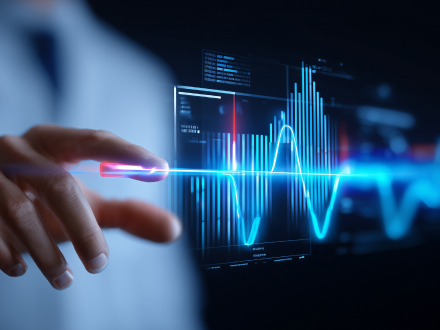


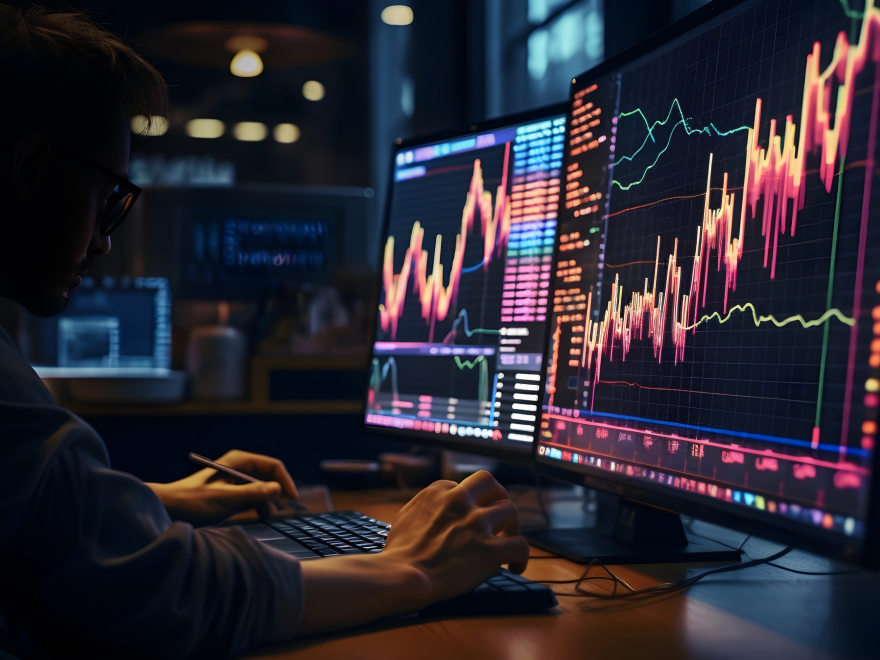
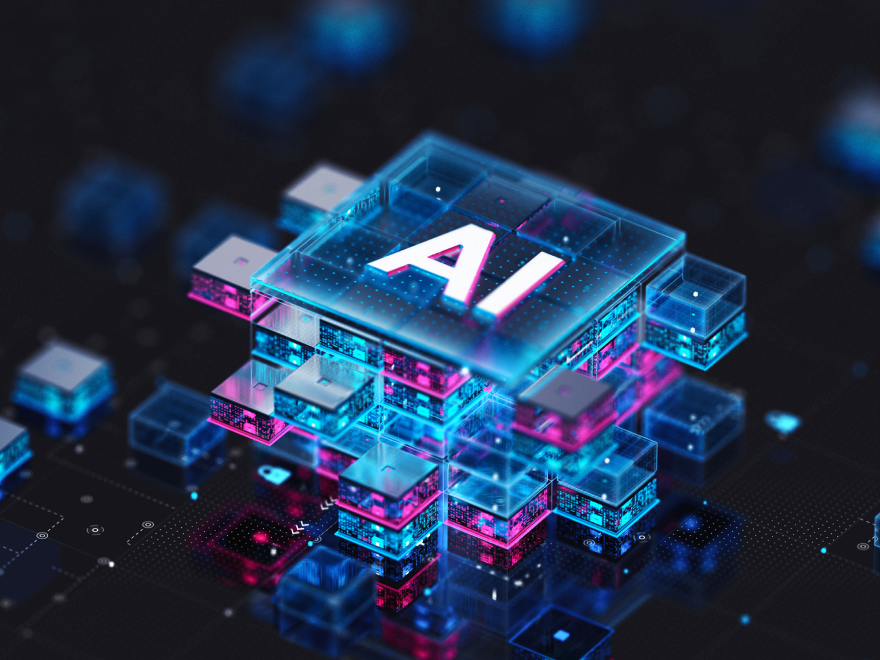


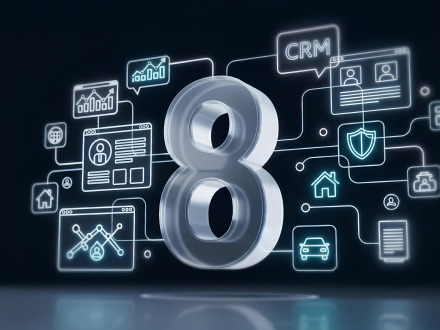

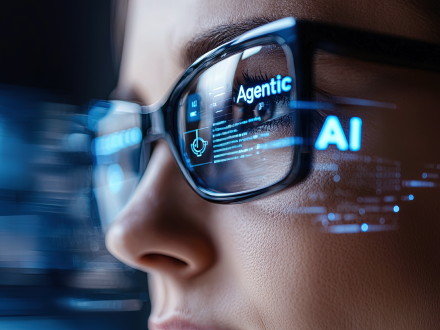
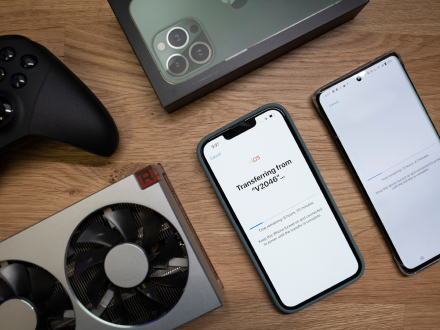

Meldingen din er sendt.
Vi behandler forespørselen din og kontakter deg så snart som mulig.

Ved å registrere deg godtar du vår Retningslinjer for personvern, inkludert bruk av informasjonskapsler og overføring av dine personopplysninger.